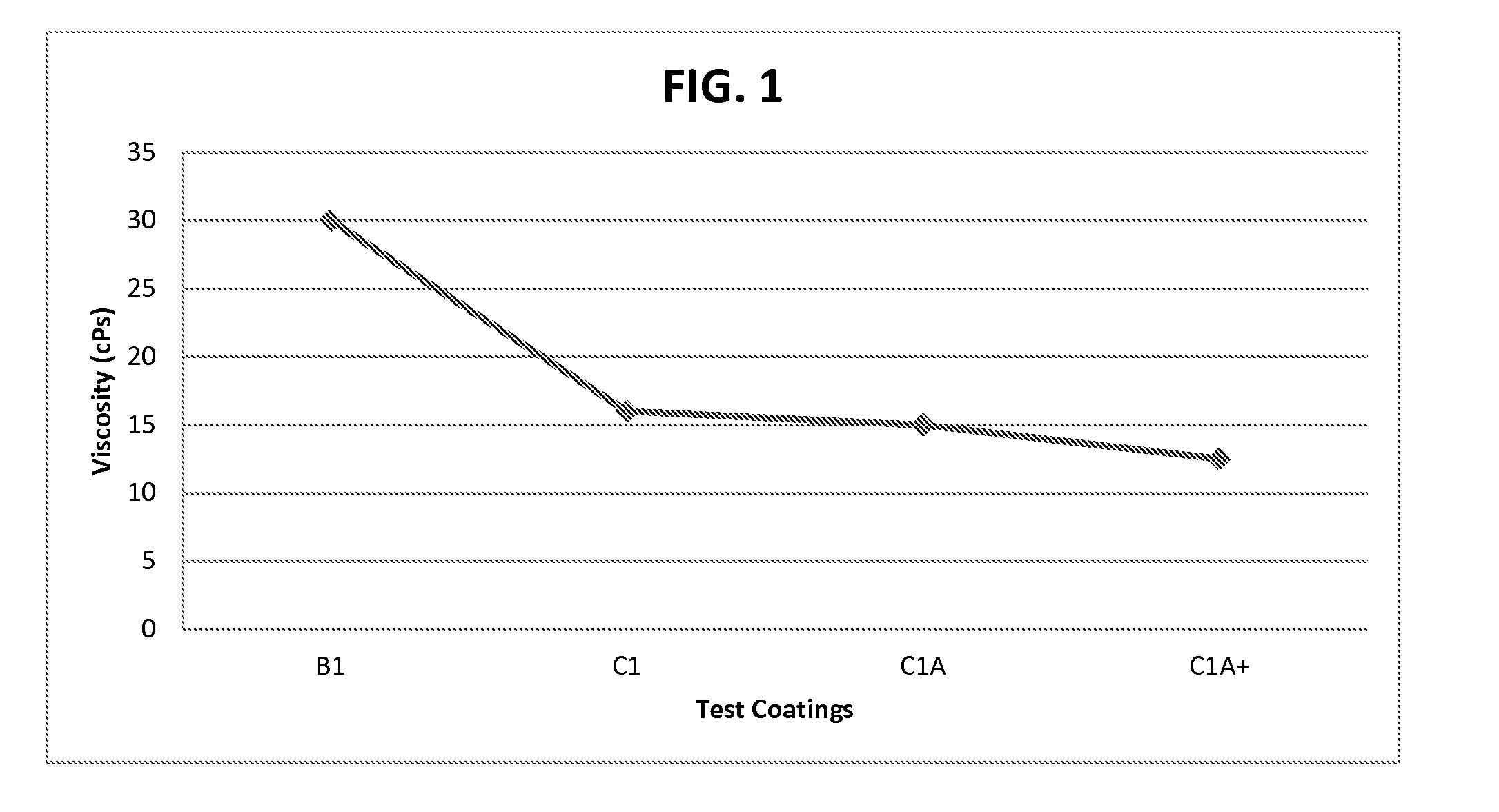Moisture-resistant edible food coating and method for applying the same
a technology of edible coating and coating layer, which is applied in the direction of coating, deep-fried products, meat/fish preservation, etc., can solve the problems of insufficient use of edible coatings in the baking industry, unappetizing appearance often dissuades potential buyers, and the surface wetting or dehydration of frozen frosted bakery products is not easy to achieve, and the composition is reduced. , the effect of improving the ability to withstand freeze/thaw cycles
- Summary
- Abstract
- Description
- Claims
- Application Information
AI Technical Summary
Benefits of technology
Problems solved by technology
Method used
Image
Examples
example 1
[0038]This example demonstrates the effect of the coating on the doughnuts after freezing and thawing. Prior to freezing, select frosted doughnuts were layered with one of six test coatings formulated with variable types and concentrations of binder (i.e., Confectioner's glaze), plasticizer (i.e., Propylene Glycol or Acetylated Monoglycerides), and alcohol as described in Table 7. After freezing indefinitely and subsequently thawing for about three to ten hours, the test coatings on the doughnuts were visually inspected for surface blemishes, namely cracks (see Table 8 below). In addition, the doughnuts were inspected for textural surface changes, such as stickiness and gloss (see Table 8 below).
[0039]Test coating #1, containing the propylene glycol plasticizer, performed least favorably of all of the test coatings, having the highest rating of cracking (i.e., 8-9) and the same level of gloss as the negative control coating #6 (i.e., 4). In contrast, test coatings test coatings #4 a...
example 2
[0044]This example demonstrates the superior performance of a coating containing plasticizer when applied onto frosted doughnuts using a sprayer. Two test formulations of the edible coating with and without plasticizer were prepared as the C1A+ and C1A coating formulations, respectively. The properties and performance of the C1A+ and C1A test coating formulations were compared to control coatings, B1 and C1, prepared with two different brands of Confectioner's glaze only (see Table 9). The B1 control coating was the thickest formulation having a viscosity of 30 cPs and a density of 0.890 g / cc along with about 34% solids (see Table 9). The C1 control coating contained no alcohol or plasticizer and was slightly less thick than the B1 coating having a viscosity of 16 cPs, a density of 0.860 g / cc, and contained about 27% solids (see Table 9).
[0045]The C1A formulation was prepared using 77% Confectioner's glaze and 23% ethyl alcohol of the total of the coating composition. No plasticizer...
example 3
[0052]This example demonstrates the improved sensory qualities of post-thawed, frosted doughnuts when sprayed with an edible coating containing plasticizer prior to freezing. After spraying select doughnuts with the C1A coating without plasticizer, the C1A+ coating with plasticizer, or not at all (negative control) as described in Example 3, the doughnuts were further tested for appearance and taste qualities via a sensory evaluation. The C1A-coated, C1A+-coated, and the uncoated Control doughnuts undergoing the sensory evaluation were quick frozen in a blast or quick freezer for 15 to about 45 minutes, then packaged and held for 2 weeks in a static freezer having temperatures ranging from about −10° C. to about −20° C. and an 80% relative humidity. The doughnuts were then thawed and tested at zero (0) hours, five (5) hours, and 22 hours in a holding room having ambient temperatures ranging from about 20° C. to about 25° C., but preferably at about 22° C., and a relative humidity ra...
PUM
 Login to View More
Login to View More Abstract
Description
Claims
Application Information
 Login to View More
Login to View More - R&D
- Intellectual Property
- Life Sciences
- Materials
- Tech Scout
- Unparalleled Data Quality
- Higher Quality Content
- 60% Fewer Hallucinations
Browse by: Latest US Patents, China's latest patents, Technical Efficacy Thesaurus, Application Domain, Technology Topic, Popular Technical Reports.
© 2025 PatSnap. All rights reserved.Legal|Privacy policy|Modern Slavery Act Transparency Statement|Sitemap|About US| Contact US: help@patsnap.com

